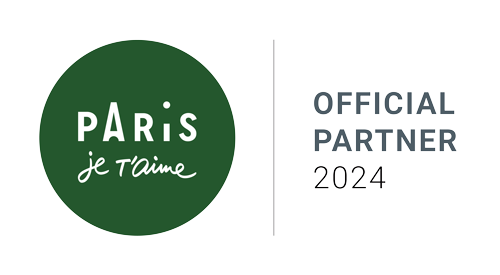Côte d'Azur:
Your project inside a painting
Your project inside a painting
We continue discovering different regions of France as they were seen by the famous artists and invite you to visit the sunny Côte d'Azur. We will share the stories of Raoul Dufy, Nicolas de Staël, Fernand Léger and many others.
Raoul Dufy
Raoul Dufy was born in Le Havre, where he started to learn painting under the portraitist Charles Lhuillier who was also the mentor of Georges Braque. Later Raoul moved to study in Paris and was inspired by the works of Edouard Manet, Claude Monet and Camille Pissarro. The main color in Dufy's paintings is blue – the color of sky and the sea. Raoul Dufy lived for several years in Nice with his wife who was originally from this city. The artist personally admitted that the best place for him to paint was by the sea.

Raoul Dufy
Nice – Bay of Angels. 1927
Nice – Bay of Angels. 1927

Raoul Dufy
The Casino of Nice. 1927
The Casino of Nice. 1927

Raoul Dufy
Open Window. 1928
Open Window. 1928
Yves Klein
Yves Klein, the master of epatage, was born in Nice to an artistic family and spent every summer in Cagnes-sur-Mer with his favorite aunt. The painter created his works, which he called cosmogonies, with various and most unusual methods. For example, one of his cosmogonies was made when the artist fixed the blue painted canvas on the roof of the car and went on a trip from Paris to Cagnes-sur-Mer, during which the painting was exposed to wind, rain and dust. The Klein's works are known for the signature shade of blue with its chemical formula being patented and titled in his name - "International Klein Blue".


Yves Klein
Anthropometry, the Blue period. 1960
Anthropometry, the Blue period. 1960

Céline, spring-summer 2017. "Anthropometries", Yves Klein
Chaïm Soutine
Chaïm Soutine was a Belarusian French painter of Jewish origin and one of the prominent figures of "Paris School". For a long time, Soutine lived and created in Cagnes-sur-Mer and Saint-Paul de Vence, from where he brought to Paris nearly two hundred paintings. Legend has it that when Amedeo Modigliani, the close friend of the artist, saw how Soutine was painting, he was not able to hold back a scream. The American collector Albert C. Barnes, who bought 50 Soutine's paintings, used to say that he was "the greater artist than Van Gogh".

Chaïm Soutine
Landscape at Cagnes. 1925
Landscape at Cagnes. 1925

Chaïm Soutine
Road at Cagnes-sur-Mer. 1923
Road at Cagnes-sur-Mer. 1923

Chaïm Soutine
The Pastry Cook of Cagnes. 1923
The Pastry Cook of Cagnes. 1923
Marc Chagall
Marc Chagall fell in love with the Côte d'Azur immediately after arriving there and wrote about it the following: "I thank fortune for bringing me to this coast". In the post-war period, he frequently visited the South of France and stayed in Nice and Saint-Paul de Vence for a long time. He eventually moved there to enjoy the magnificent view opening from above on the sea shore and surrounding landscapes and capturing it on canvass. Along with his neighbors Aimé and Marguerite Maeght Chagall worked on the project of the Maeght Foundation, a museum of modern art, where his artwork is nowadays on display.

Marc Chagall
The Lovers of Vence. 1957
The Lovers of Vence. 1957

Marc Chagall
Bay of Angels. 1962
Bay of Angels. 1962

Marc Chagall with his wife Valentina and a friend during a walk on the Côte d'Azur. 1969
Nicolas de Staël
Another admirer of Saint-Paul de Vence, Nicolas de Staël, born Nikolai Vladimirovich Staël von Holstein, is considered one of the greatest masters of post-war European art. Son of the last Deputy Commandant of the Peter and Paul Fortress, Nicolas was adopted in 1922 by the family of Belgian Catholics. After serving in the Foreign Legion, he moved to Nice where he met Le Corbusier, Yves Klein and Sonia Delaunay. Under the guidance of the latter he got acquainted with abstract art and started drawing inspiration from works of Cézanne, Matisse, Picasso and Soutine. Later Nicolas met Georges Braque, and being influenced by his friend, the artist André Lanskoy, completely dedicated himself to pure abstraction, working in his studio in Antibes.


Nicolas de Staël
Paysage méditerranéen. 1953
Paysage méditerranéen. 1953

Nicolas de Staël
Nu couché bleu. 1955
Nu couché bleu. 1955
De Stael's painting "Nu couche" became the most expensive work of art sold in 2011 in France – it was bought for 7 million euros!

Nicolas de Staël
Nu couché. 1954
Nu couché. 1954
Fernand Léger
Master of decorative art, Fernand Léger came from Argentan, a city in Normandy. During his study in Paris, he got acquainted with Soutine, Chagall, Delaunay and later created ballet sets for Serge Lifar's ballets. In 1950s Fernand Léger worked in a ceramics workshop in Biot, a small town near Antibes, where he bought a house – after his death, Nadezhda Khodossevitch-Léger, his wife, decided to set up in this place a museum. The building was constructed in 1960 by André Svetchine, the architect from Nice and, easy to guess, of Russian origin.

Fernand and Nadia Léger in the garden of the hotel La Colombe d'Or in Saint-Paul de Vence

Fernand Léger
Russian Ballet. 1914
Russian Ballet. 1914

Fernand Léger
Reading. Portrait of Nadia Léger. 1949
Reading. Portrait of Nadia Léger. 1949
Pierre Bonnard
One of the greatest colorists of the 20th century, Pierre Bonnard first came to the Côte d'Azur in 1909 while visiting Saint-Tropez. The last 20 years of his life he spent in Le Cannet, where now the artist's museum is located. In his youth, Pierre Bonnard was leading a group of artists called the Nabis, the followers of Paul Gauguin. Bonnard's father, who was a senior official in the French Ministry of War, had aspired to make his son a lawyer. Pierre even studied at the law school but at the same time he entered the Academy of Arts and as a result devoted himself entirely to art. Bonnard's idea of a favorite pastime was reflected in his words – "Smudging the paper all day long".

Pierre Bonnard
At the Seaside (Strollers on the Promenade). 1906
At the Seaside (Strollers on the Promenade). 1906

Pierre Bonnard
Boats at Antibes. 1925
Boats at Antibes. 1925

Pierre Bonnard
Le Cannet. 1943
Le Cannet. 1943
Paul Signac
One of the first painters, who discovered the Côte d'Azur in terms of art, was Paul Signac. In 1892 he arrived at Saint-Tropez on his boat "Olympia" and bought a large home-studio, where he later spent the most productive years of his artistic life. Thanks to Signac, Saint-Tropez had become a booming spot for rapidly developing painting art of the beginning of the 20th century – Henri Matisse, Pierre Bonnard, Pablo Picasso and others came to create here. Impressed with the painters works, the French aristocracy started gathering at Saint-Tropez – that was the beginning of the bourgeois story of a small paradise known as Saint-Tropez.

Paul Signac
Houses in the Port of Saint-Tropez. 1892
Houses in the Port of Saint-Tropez. 1892

Paul Signac
Saint-Tropez, Sunset in the Pine Woods. 1896
Saint-Tropez, Sunset in the Pine Woods. 1896

Paul Signac
The Port of Saint-Tropez. 1901
The Port of Saint-Tropez. 1901
Henri Matisse
Precisely in Saint-Tropez, where he came in the summer of 1904, Henri Matisse conceived the idea of fauvism. Signac had rented an entire villa near his house for Matisse and his family. Here, Matisse worked on preliminary sketches for the afterwards very famous painting regarded as the beginning of fauvism - "Luxe, Calme et Volupté" ("Luxury, Calm and Pleasure"). The painting was immediately bought by Paul Signac and today it is on display in the Museum d'Orsay in Paris.

Henri Matisse
Luxury, Calm and Pleasure. 1904
Luxury, Calm and Pleasure. 1904

Henri Matisse
Bay at Saint-Tropez. 1904
Bay at Saint-Tropez. 1904
Henri Matisse found his heaven on earth in Nice, which he visited in 1917. In this city, the artist created several dozen paintings full of the world's liveliest and succulent colors so innate for the Côte d'Azur. The Matisse museum, presenting the collection of Matisse works, was opened in 1963 in a 17th century villa in Nice.

Henri Matisse
The Regattas in Nice. 1921
The Regattas in Nice. 1921
Pierre Auguste Renoir
In 1907 Pierre Auguste Renoir bought "Les Collettes", a country estate in Cagnes-sur-Mer surrounded with an olive garden and looking out over the clear blue of the Mediterranean Sea. This time correlated with the so called "Red Period" in the artist's creative process when he was painting the sunny landscapes of Cagnes-sur-Mer and voluptuous still-lives with exotic flowers. Today, the house is the artist's museum that is considered to host the world's largest collection of Renoir's sculptures.

Pierre Auguste Renoir
The Coast at Cagnes, Sea, Mountains. 1910
The Coast at Cagnes, Sea, Mountains. 1910

Pierre Auguste Renoir
Collette's House in Cagnes. 1912
Collette's House in Cagnes. 1912

Pierre Auguste Renoir
The Vineyards of Cagnes. 1908
The Vineyards of Cagnes. 1908
Pablo Picasso
Pablo Picasso is undoubtedly one of the most famous painters whose life was closely tied with the Côte d'Azur. At the age of 65 the artist settled in the former Grimaldi castle at Antibes and in a half year created nearly 100 artworks that later comprised the bulk of the museum's collection here. Picasso called Antibes a city that knows the "joie de vivre" – the joy of living.

Pablo Picasso
The Joy of Living. 1946
The Joy of Living. 1946

Pablo Picasso
Night Fishing at Antibes. 1939
Night Fishing at Antibes. 1939


